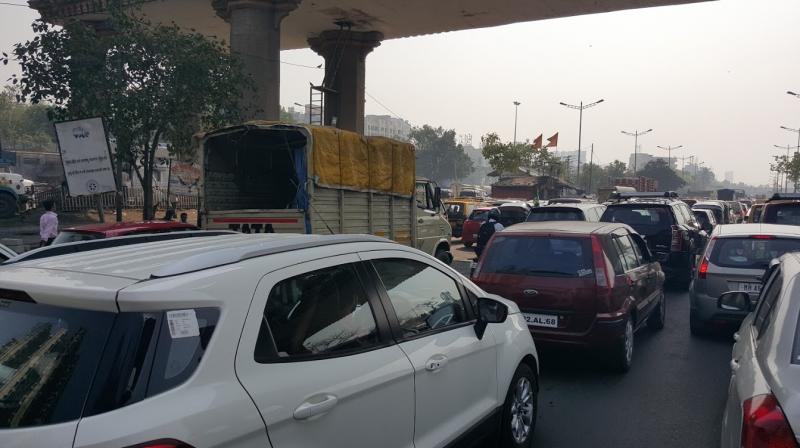What can “Internet of Thingsâ€do for the transportation and logistics sector

The Internet of Things (IoT) has emerged as the most impressive of all new technology trends. Due to IoT’s potential to permeate a number of sectors, many industries are viewing it as a huge opportunity. Market watchers are claiming that the installed base of active wireless connected devices will reach over 40 billion in 2020. This will open doors to a vast new market for IoT solutions with the help of mobile technologies. !”
Additionally, the urbanization challenges are propelling the need to adopt IoT enabled smarter methods across industries. City resources are already stretched to the optimum due to which problems such as traffic congestion, increasing fuel prices and CO2 emissions are on the rise. Anticipating the urgent need to improve the quality of life and invite investments, the government has implemented the Smart Cities mission to recast the urban landscape of the country. Smarter concepts can provide the framework for implementing a vision of advanced and modern urbanisation. Transportation and logistics sector will be the leading adopters of this revolutionary technology to ensure security, efficiency and keeping pace with the urbanisation challenges.
Today, only about 20 Indian cities with populations over 5 Lakh each have any kind of organized public transport systems. With a smart mobility system, multi-modal transport services can be integrated. This will enable intelligent traffic management and smart parking.
In cities, smart traffic lights using sensor technology can gauge the traffic condition to tune traffic lights which can enable smooth flow of traffic. Digital maps already use the GPS information from phones to compare allowed speed limits to driver’s actual speed. It then uses this information to mark the routes on the maps in different colours to represent the delay in traffic. Vehicles can become more connected with the availability of real-time data from different sources to take immediate decisions and create a synchronized system that would be safer and efficient.
In addition to the vehicles themselves, IoT will create connections between and among vehicles and the transportation infrastructure. And this connectivity can have several benefits. On-board sensors can help maintain vehicles’ health by monitoring their status all the time and can also alert the driver if any abnormality is detected. Route navigation can be improved with the on-board cellular connectivity in connected vehicles. The up to the minute traffic information can be gathered, and this data can help drivers on the road avoid heavy traffic junctions or slow down if an accident may have taken place at a spot ahead. Ultimately, all this will lead to more efficient use of transport infrastructure along with better engagement with customers.
IoT technology can be applied in the logistics industry as well. Freight goods transport continues to be riddled with challenges such as weather, distance, thefts, etc. on a day to day basis. Also, in the era of consumer being the king, timely delivery and transparency are the two biggest challenges. With machine-to-machine (M2M) communication and global positioning system (GPS) capabilities, vehicle in motion and rest and its contents can be tracked in real time. The biggest and most immediate support it can ensure is efficient monitoring to avoid predictable delays. With this, any commercial vehicles carrying perishable or temperature sensitive goods and cargo can be tracked from start to end point leading to a more efficient utilization of the transportation network. This could prove particularly useful for securely transporting food and medicines which are temperature sensitive goods and also heavily regulated for quality.
Such IoT solutions are based on smart M2M technology and makes use of existing and planned infrastructure investments to help improving the reliability of the public transportation network and consequently improve the overall quality of life. In the future, Smart Cities will showcase an organic integration of the IT and physical infrastructure with these systems operating collectively to generate useful information. The required infrastructure to support the smooth functioning of IoT systems is already underway. While it may take some time for public high speed broadband and 4G to become day to day across the length and breadth of the country, the foundation for service delivery and communication groundwork has been laid out and the existing infrastructure can be effectively used for applications discussed here.
Currently, the efficient use of M2M applications supported by 2G or 3G connectivity is already helping organisations accomplish more with fewer resources. Additionally, the expected regulatory framework for IoT along with policies to promote the sector will further fuel the growth and synchronised implementation of IoT technologies.
Importance of IoT security
IoT will enable connections between a billion things, driving wide adoption of cloud and mobility. And therefore, security will be a critical aspect of the structure as you are no longer dealing with one component but the whole network and the cloud. There will be many access points an attacker can target on a connected device and get his hands on the data moving around the IoT. A multi-pronged approach should be applied to securing this data. Which means ensuring that all devices are identified and authentic, software updates are authorised, and access to the systems monitoring and managing the network/server are controlled and authenticated.
Security is not a one-off activity, but an evolving part of the IoT ecosystem. As new devices are added, devices decommissioned or integrated with the network – a sustainable security life cycle management will be required to support these activities so that the environment in which the connected devices operate is secure and trustable.
New age secure IoT solutions will power a robust infrastructure that will help improve capacity of civil utilities and also improve operational efficiencies with the overall profitability of organisations while reducing impact on the environment.
With secure IoT, we can bring out the actual power of IoT.
— by Jitender Sandhu, Director M2M - ASEAN and India, Gemalto.

